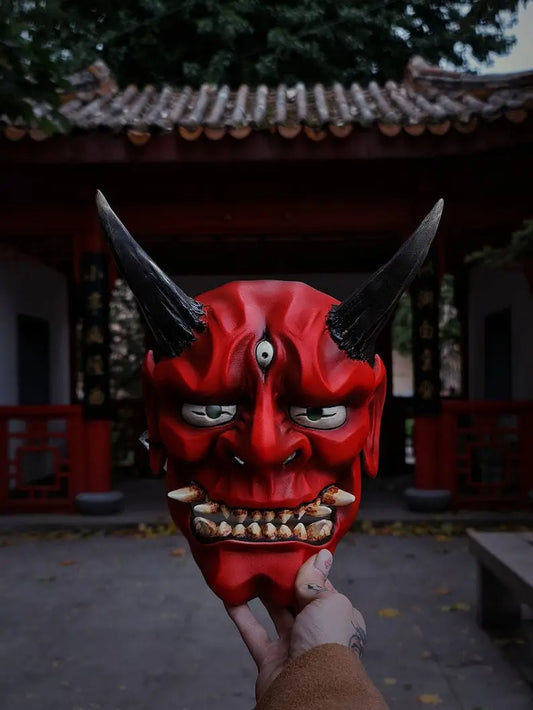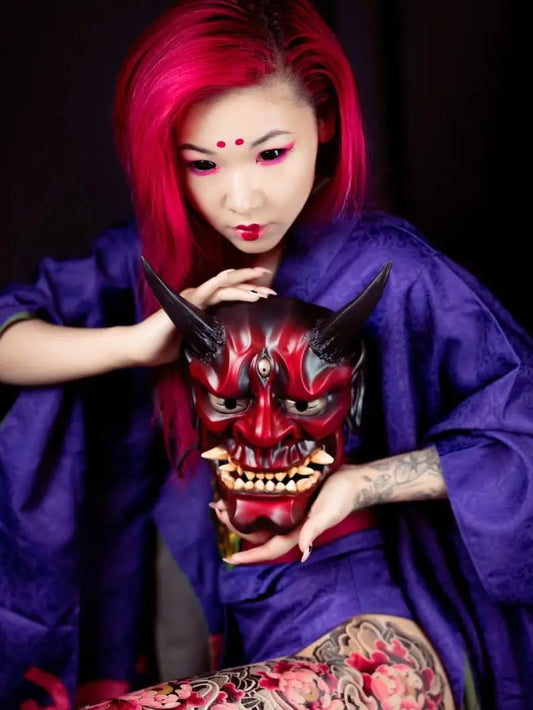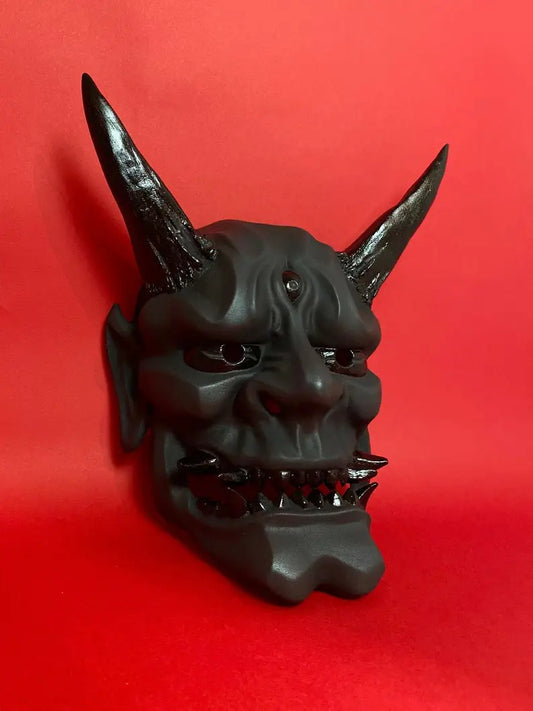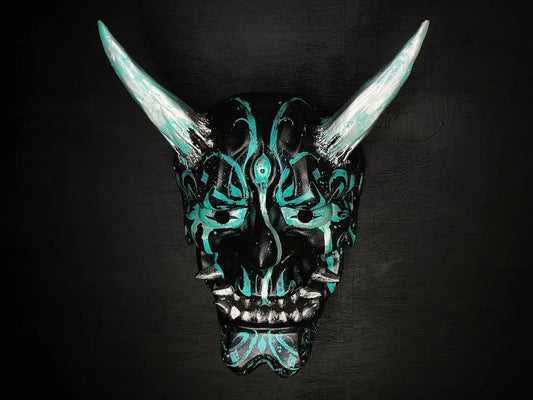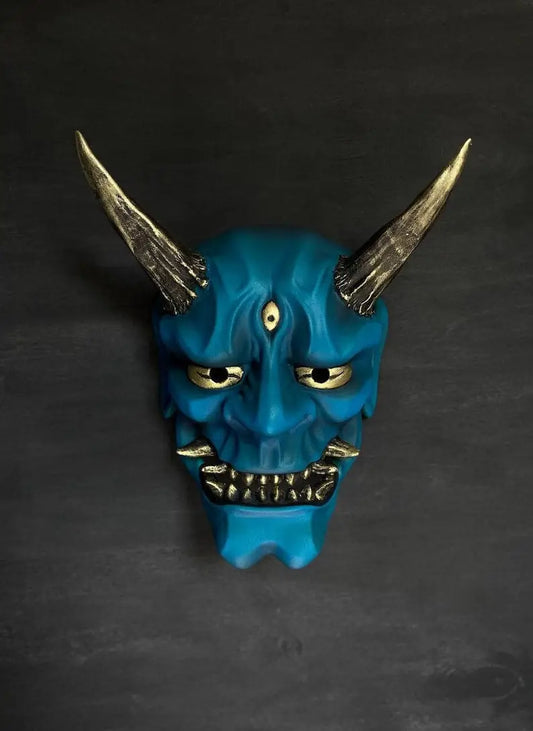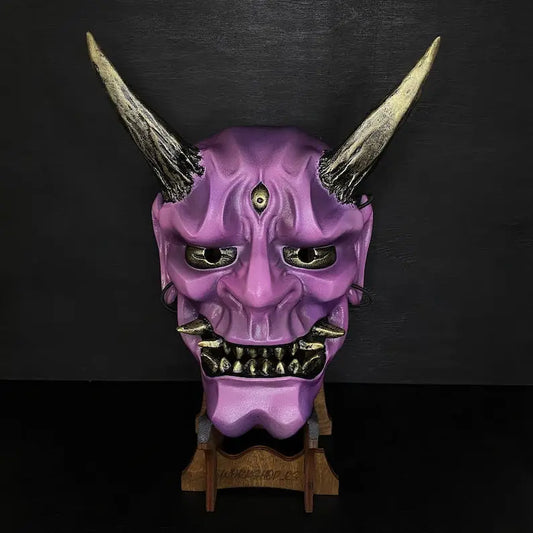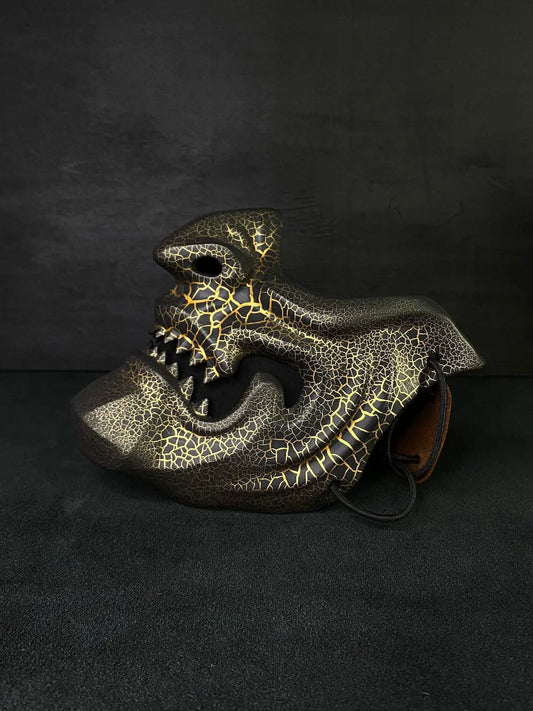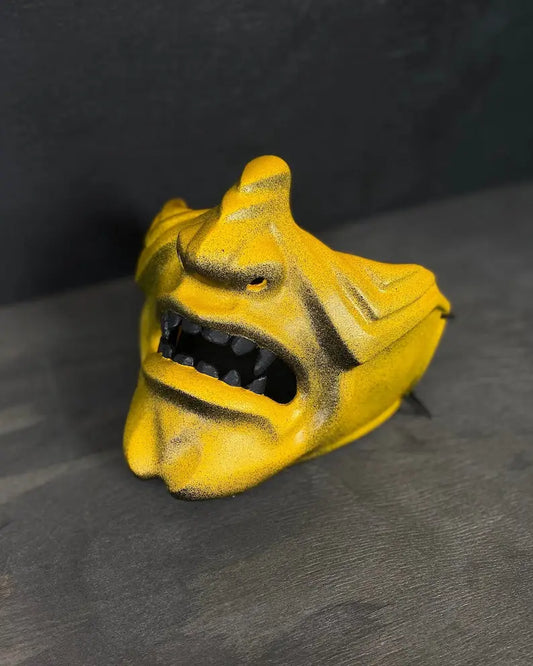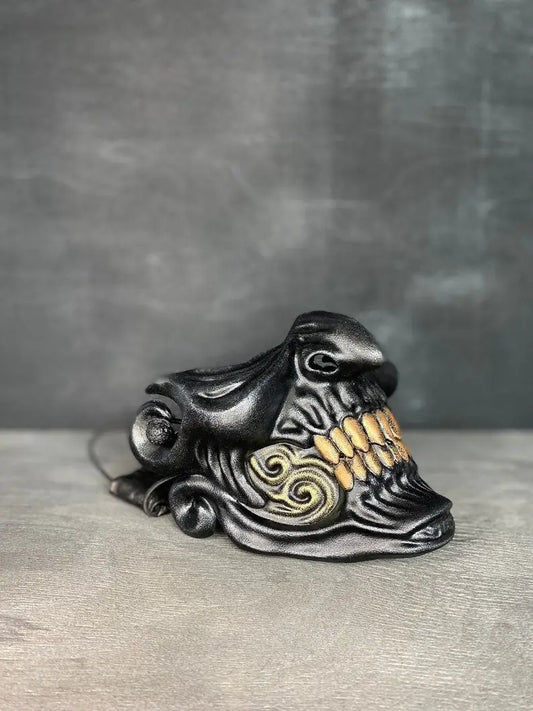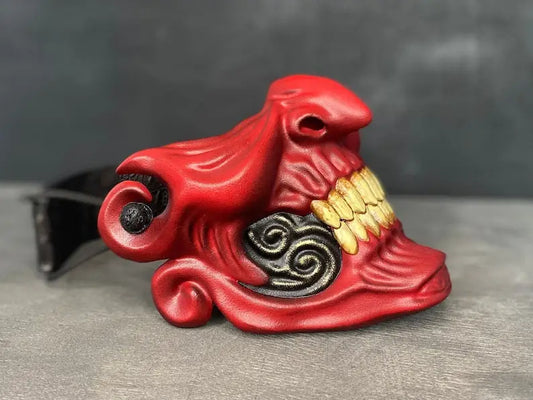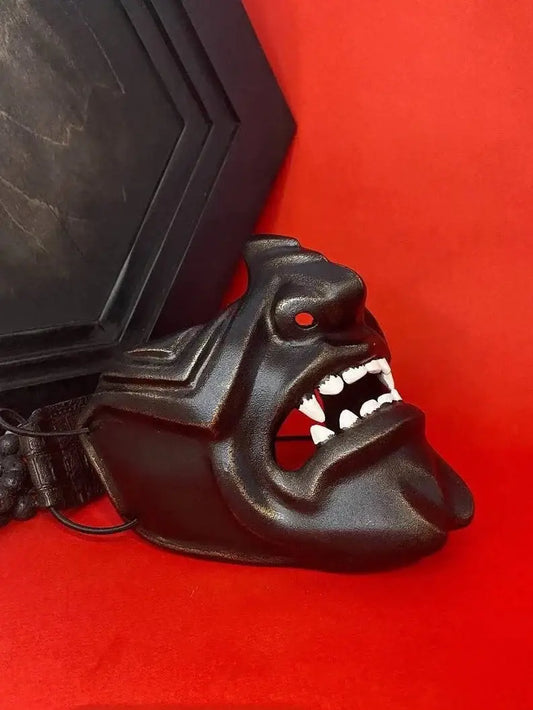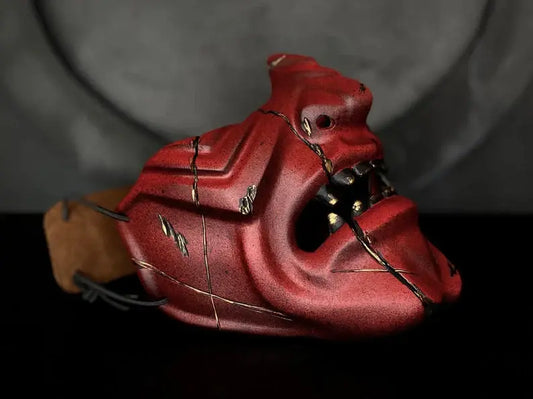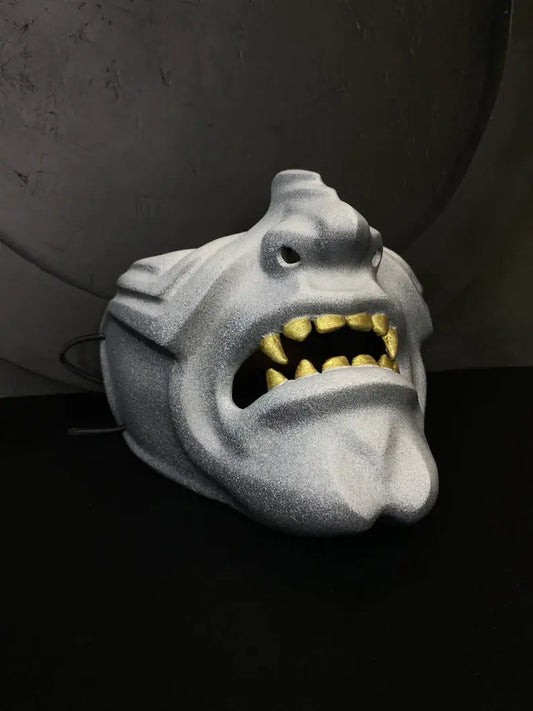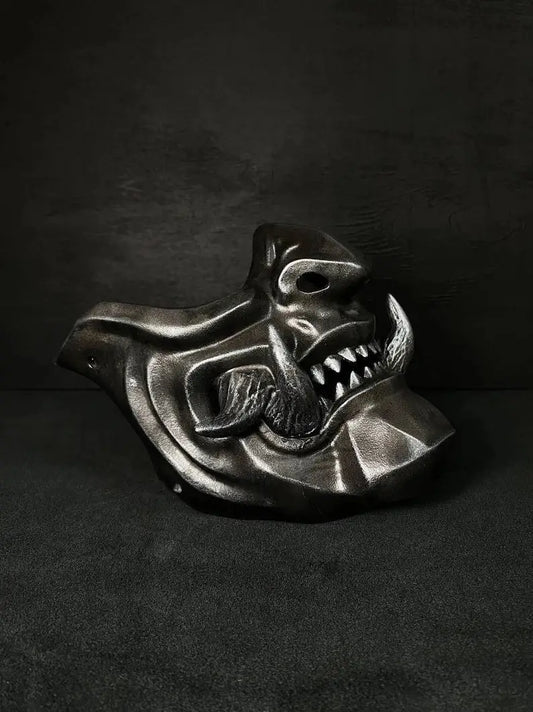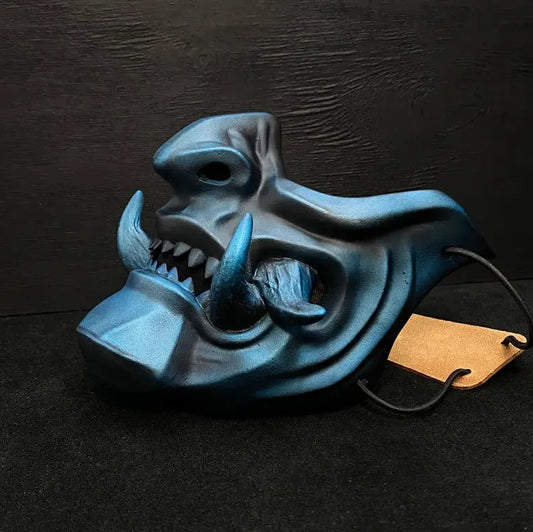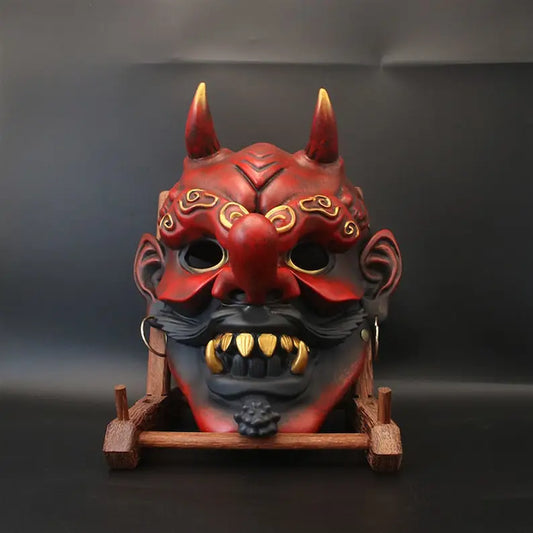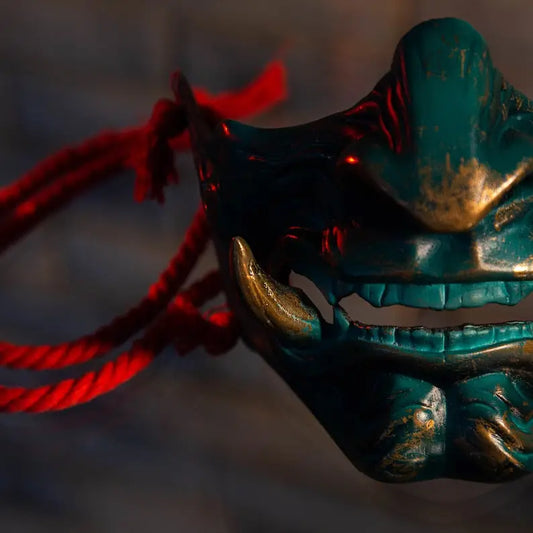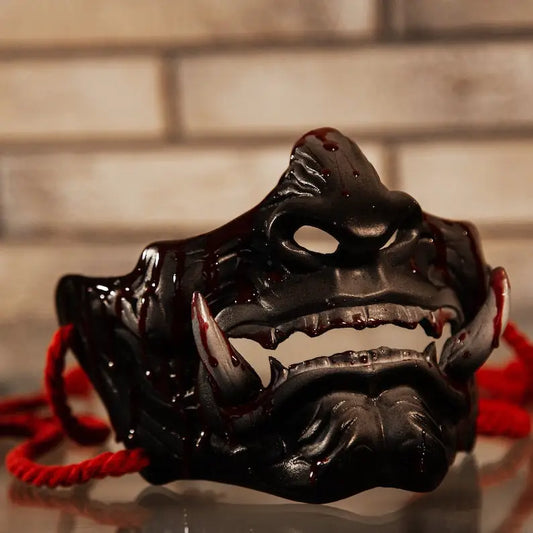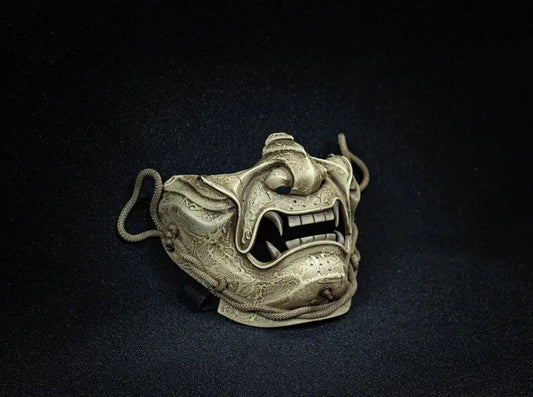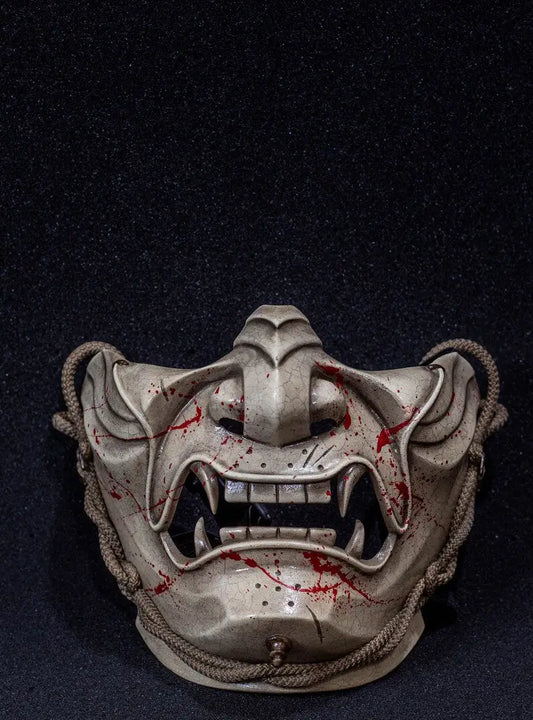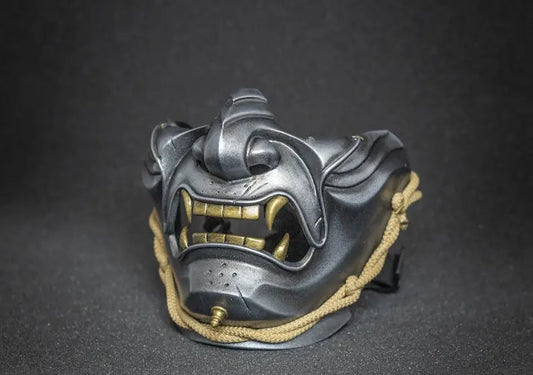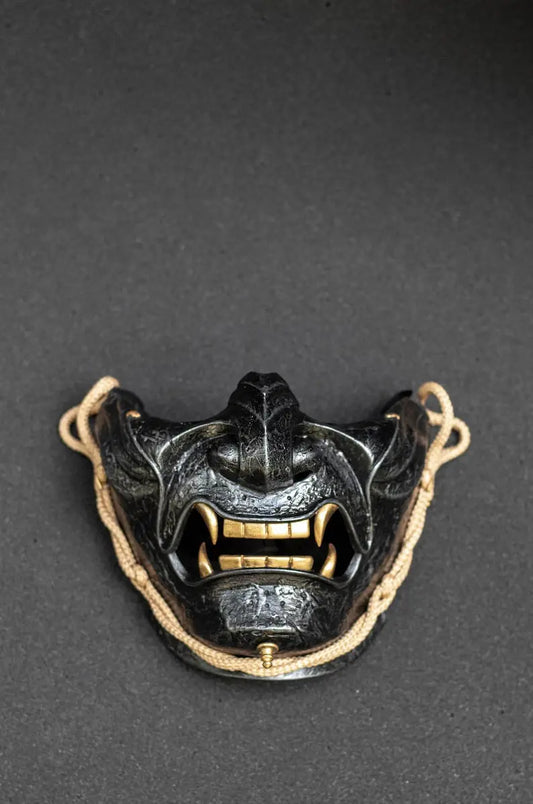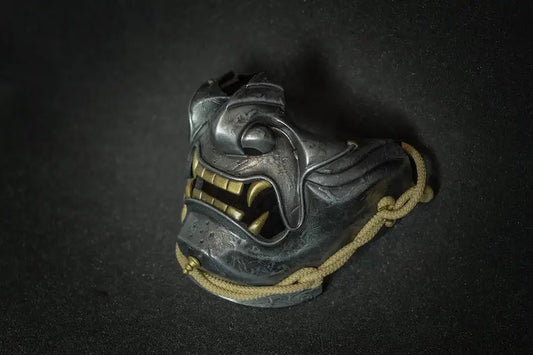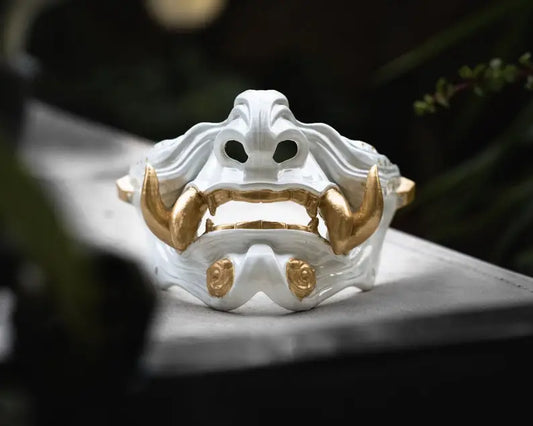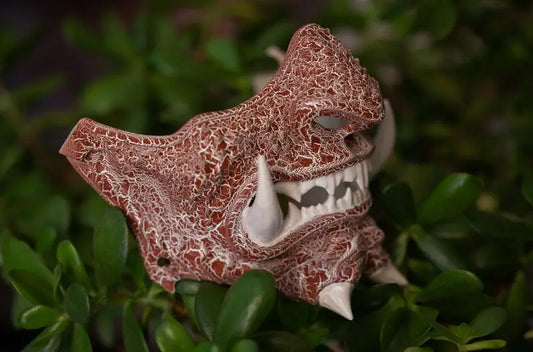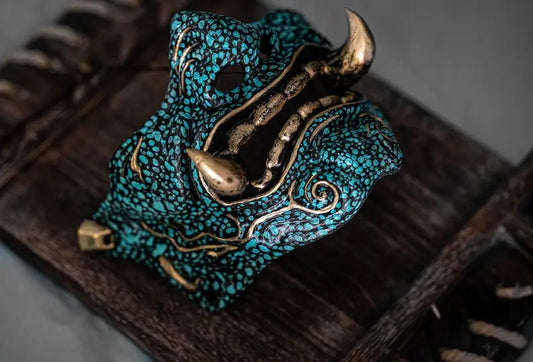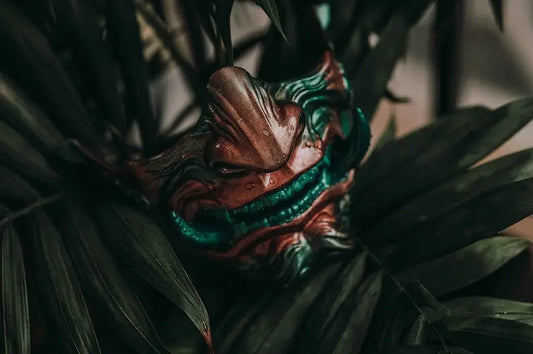Awaken the Beast Within: Introducing the Oni Mask
Tap into the ancient ferocity of Japanese folklore with our Oni Mask collection — a bold, haunting accessory rooted in the spirit of the ogre-like demons from Japan’s rich mythological tapestry. Symbolizing wrath, vengeance, power, and protection, the Oni mask has long stood as both a feared visage and a revered emblem. Whether you wear it for cosplay, display it as decor, or wield it as a ritual symbol of inner strength, this mask calls forth your wildest warrior spirit.
From anime and samurai lore to kabuki theatre and modern urban fashion, the Oni mask blurs the line between folklore and fierce fashion. With its snarling fangs, curved horns, and hypnotic expression, it's more than a costume piece — it's a challenge to your inner shadow. It embodies power unbound, rage redirected, and a kind of ancestral strength that transcends time. Throughout Japan's centuries-old history, oni masks were used to frighten, empower, and protect. Now, they serve as artistic relics of spiritual strength and personal transformation.
Whether you wear one to embody a wrathful protector or display it to channel protective energy in your home or studio, an Oni Mask is a symbol that merges past and present, fantasy and reality.
Sculpted in Shadow: Features & Materials
Our Oni Masks are designed for durability, drama, and dramatic display. Made to honor tradition while meeting modern standards, every mask carries striking detail, bold finish, and comfortable form. These aren’t just props — they’re wearable works of art molded with reverence.
| Feature | Details |
|---|---|
| Material | Fiberglass, ABS plastic, or resin with matte/metallic paint |
| Style Variants | Red demon, black wrath, silver oni, fire spirit, ice ghost |
| Fit & Comfort | Padded interior, adjustable straps, breathable nose and mouth cutouts |
| Size | One-size-fits-most for adults, snug yet breathable fit |
| Detailing | Carved fangs, raised horns, engraved kanji, hand-weathered finish |
| Display Add-Ons | Optional wall mount, LED stand, or kabuki-style pedestal |
Every line on the face, every horn curve, and every fang mark is intentional. These details are not just for show — they symbolize rage, wisdom, and the trials of spiritual growth. Some variants include blood-red finishes symbolizing vengeance, others are metallic-coated to reflect ritual purity, and others are cracked or weathered to show the endurance of hardship.
Why Oni Masks Are Timeless Power Symbols
These masks carry centuries of meaning. Here's why fans, collectors, martial artists, performers, and stylists love them:
Cultural Iconography. Oni masks have protected homes, spirits, and warriors since ancient Japan — worn during Setsubun to ward off evil, used by samurai in Noh and Kabuki performances, and even utilized in martial rituals.
Perfect for Cosplay. Popular in anime like Bleach, Demon Slayer, Blue Exorcist, Jujutsu Kaisen, and countless others, these masks bring mythic power to your costume. They give presence, weight, and mystery to any look.
Versatile Aesthetic. Looks amazing with samurai gear, techwear, urban fashion, kabuki robes, or even paired with modern streetwear for a daring, edgy visual language.
Conversation Magnet. Mounted on a wall, worn at events, or placed as a centerpiece, the Oni mask grabs attention, sparks intrigue, and tells a story all on its own.
Collectible Appeal. As spiritual icons, dramatic art pieces, and fandom symbols, Oni masks elevate any personal collection, shrine, or studio display with mysticism and might.
How to Wear or Display the Oni Mask
From traditional ceremonies to modern cosplay, here’s how to style your Oni Mask with presence and purpose:
Full Oni Cosplay
Pair with samurai armor, tattered robes, or a kabuki outfit. Add war paint, katana, and sandals. Move with intention — every step becomes a performance.
Street Fashion Fusion
Use it as a headpiece or shoulder-hung accessory with hooded jackets, techwear, and minimalist cuts. Add red accents and stylized kanji to merge traditional with cyberpunk.
Martial Arts Dojo Decor
Mount it above your dojo door, sparring corner, or shomen wall. In martial arts circles, the Oni represents the disciplined channeling of inner demons.
Artful Wall Display
Frame it with calligraphy scrolls, LED underglow, or reclaimed wood panels. Place incense, candles, or small warrior statues nearby to create a spiritual aesthetic.
Festival or Event Look
Rock it during Setsubun, cosplay expos, Halloween, street art shows, or anime nights. Mix it with traditional wear or experimental style. Every look becomes a narrative.
Pair It With: Fierce and Fabled Accessories
Enhance your Oni mask experience with these perfectly matched items:
| Item | Why It Works |
| Katana Replica | Every oni warrior needs a blade to complete the story |
| Black Kimono | Wraps your look in traditional flow and visual impact |
| Oni Horn Rings or Jewelry | Extend the horn motif into your accessories |
| Anime Kimono | Anime flair meets traditional demon symbolism |
| Ukiyo-e Art Scroll | Sets cultural tone and historical context in your display |
| Oni Mask Wall Mount | Showcase the mask in warrior-like reverence |
Gift Idea: Mask + horn pendant + flame scroll + red LED stand = a warrior’s altar in one unforgettable box. Whether given for a birthday, as a spiritual gift, or part of an anime-inspired collection, it holds meaning beyond aesthetics.
Oni Mask: Face the Darkness, Own the Power
The Oni Mask represents a journey through fear, anger, and control. It’s a tool, a symbol, and a soul mirror. Whether you wear it to become the storm or mount it as a reminder of strength, it is a testament to the fire we all carry inside.
In times of emotional intensity, in creative performance, or as a shield against unseen negativity, the Oni Mask acts as armor of the spirit. It does not just hide you — it reveals what lies beneath.
Own your shadow. Honor the myth. Become the legend.


